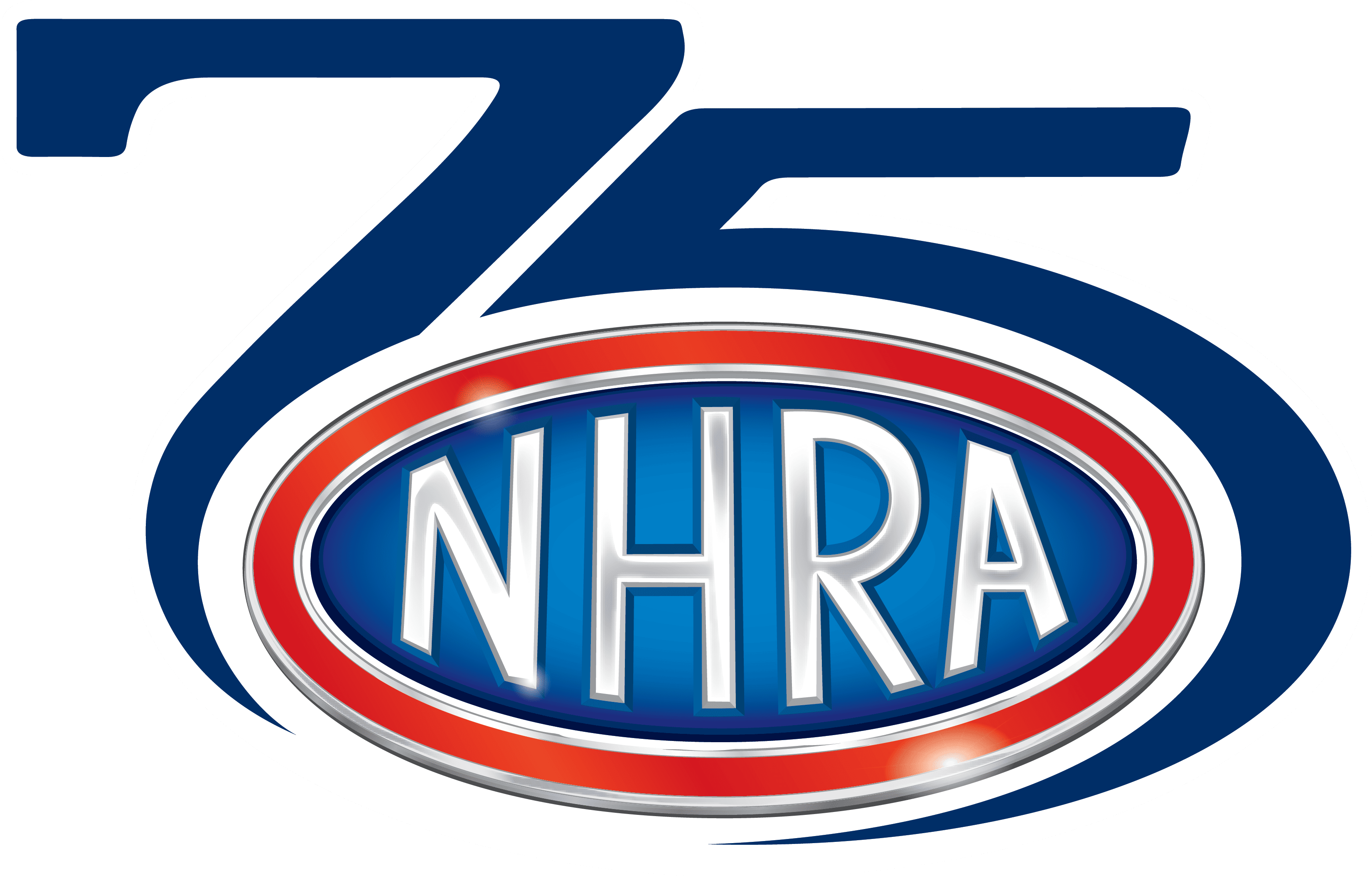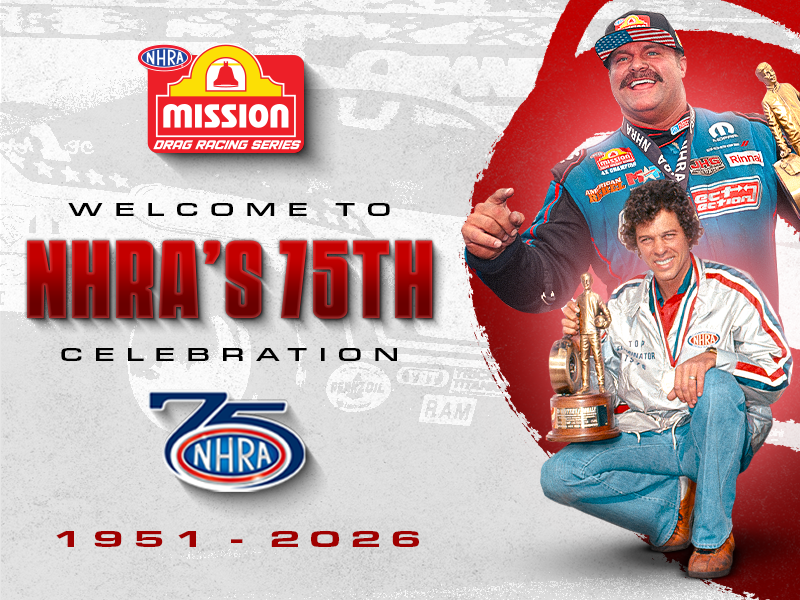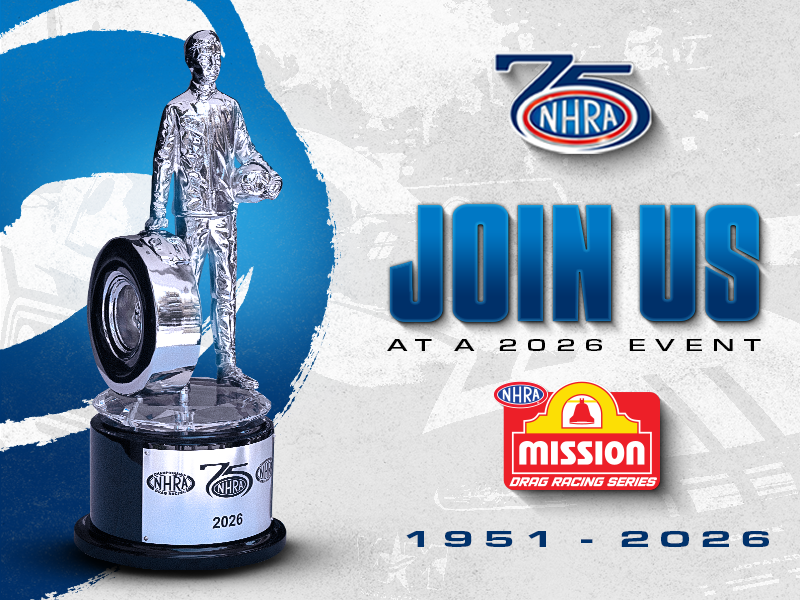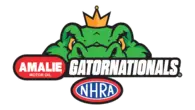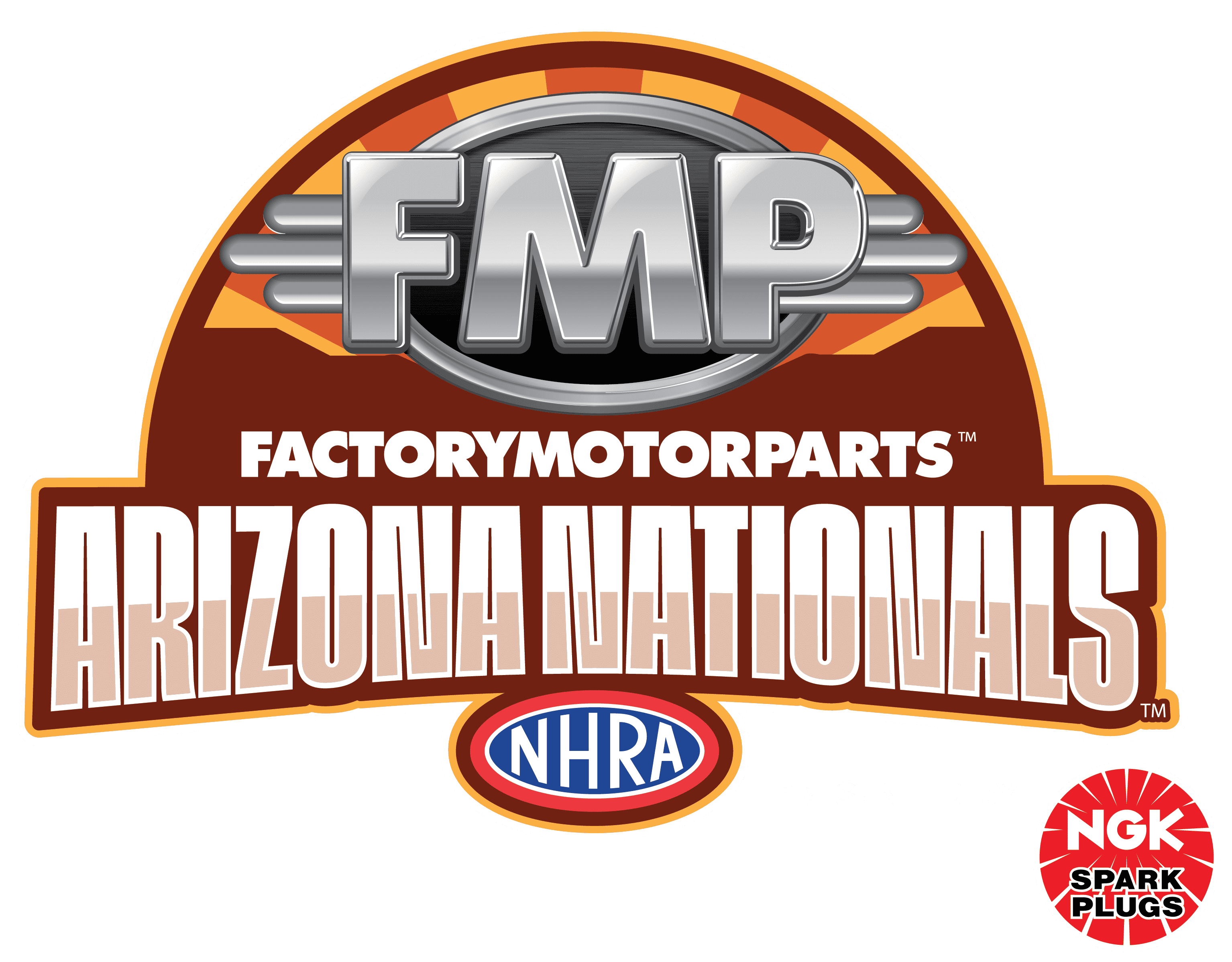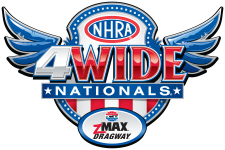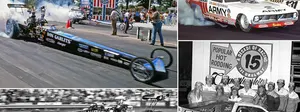I've Got Mail!
Remember when you first got on the Internet (or what passed for it back then)? For a lot of us early adapters in the early 1990s, that meant America Online, and save for a nitro engine, there was no more thrilling sound than hearing “You’ve Got Mail” when you logged on to AOL. Email was still a pretty new and fascinating concept back then. “Wait, someone can sit at their computer and write me a letter, and I’ll get it within a few seconds? Inconceivable!”
Today, we take it all for granted, especially since we’ve become a mobile community with email and, of course, text messaging right on our phones and so on (still waiting for my flying car; I’m talking to you, Jetsons), and although my computer no longer verbally greets me, I still love opening my email every morning and seeing 100 new messages in my Inbox, with every one holding the possibility of a new adventure or an idea or contribution for this column (or an unexpected financial opportunity from a new friend overseas).
My Inbox has been overflowing the last couple of weeks with follow-ups to some recent columns, so I thought I’d share some of them this week.

 |
 |

Lovett's view of the fight, previously unpublished photos, I believe.
|
I got back Monday from Seattle, where I was stopped in the pits by more than a dozen Insider readers who wanted to express their love of the column (thanks, guys!), and I was even flagged down by Tony Pedregon, who wanted to say what a kick he got out of the story about the starting-line fight at the 1970 U.S. Nationals and wanted to know if I had more info. The good news for him was that I had already been on the case. East Coast photo ace Norman Blake was the first to comment about it, ID-ing one of the principals as photographer Ted Robinson and the other (the toupee-losing one) as a fan, and suggested I talk to longtime Midwest photogs Richard Brady and Tom Schiltz for details because they were there. I also reached out to the dean of drag racing lensmen, Jon Asher, for his recollections, knowing he probably had been there, too.
Schiltz, a sometime contributor to his column, verified Robinson’s identity and sent along this photo of him.
“I don’t remember who Ted shot for, but he seemed to be at the major races,” Schiltz remembered. “He always had his camo hat and spread out a tarp with his rather large number of offbeat cameras. [NHRA Photo Editor Leslie] Lovett always got a kick out of the spring-wound ones."
Brady remembers that he was from Michigan and echoed Schiltz’s interesting comment about his equipment. “He had a huge amount of equipment, but nothing was the same,” recalled Brady. “By that I mean he'd bring what seemed like six or eight cameras with lenses to Indy, but there would be one Nikon and a lens for that, one Mamiya and one or two lenses for that, and so on; the same with his flash gear and he would spread this all out on what seemed like an Army slicker!”
It was Asher, though, who came through with the goods on the incident, which came just as Modified finalists Joe Lemley and Dean Lowery were preparing to stage their race cars.
Asher says that the toupee-wearing pugilist was actually an interloping fan, who apparently got into Robinson’s way. How did the fan end up in such a restricted area? According to Asher, some members of ABC’s television crew, which was filming the event for Wide World of Sports, had left before the finals and, incredibly, handed their credentials to spectators standing along the fence!
“ABC had way more people on hand then they needed, and many of them left before the finals, leaving only the guys manning the cameras and the on-air talent behind,” he explained. “So the guy with the bald head came out there and just stood in front of Ted Robinson and everyone else and refused to move (because he had a credential, of course). I believe Leslie was next to me on his ladder. We were looking through the cameras when Buster [Couch, Chief Starter] suddenly stood between the two cars with his arms out to his sides indicating they should hold, and he was clearly looking right down where we were. I turned to the left (downtrack), and there they were, rolling around. Robinson, who was [not a great] shooter despite having more gear than any living, breathing human being in the place, was at a distinct disadvantage because of the cameras.”
Once the details emerged of how the interloper had gained access, NHRA ratcheted up the control of the credentials, so something good did come out of it.
“While the fight thing was obviously over the top, in some respects we were all glad it happened because it did bring about changes,” added Asher. "I can’t tell you how many times we would find ourselves screaming at some jerk who had a credential and no camera, who refused to move out of the way because he had that pass. And, as you may well imagine, when one of [them] showed an ABC credential to some rent-a-kid guard, the rent-a-kid disappeared, and we had to deal with the person after that.”


(Above) Clayton Taylor now and then. He's still into photography, shooting birds in Texas. (Below) One of his hundreds of images from Connecticut Dragway.
|
 |
Tom Edwards’ photos from Connecticut Dragway sparked a lot of interest and commentary and calls for more similar shots. One of the people I heard from was Clayton Taylor, who I remember from my earliest years at National Dragster as the track photographer there.
“My first day at Connecticut Dragway was as a 12-year-old, watching Don Garlits (red car) match race the Ramchargers,” he remembers. “When the little bits of rubber from the full-track smoky passes started falling in my hair as the clouds dispersed, I was hooked! I initially hung on the return road fence, snapping pictures with an old roll-film camera. After a few years, we went into the pits, and I started collecting autographs in my new autograph book. I still took a few photos, but the collection of signatures grew quickly: Charlie Allen, ‘Jungle Jim,’ Lew Arrington, Larry Reyes, and Roland Leong on the same page; Richard Tharp and Harry Schmidt on the same page; ‘Wild Willie’ Borsch (along with a greasy thumb print), Boris Murray, E.J. Potter … oh, heck, they are ALL special to me.
“In 1973, I became the track photographer; Les Lovett got me photo passes to NHRA national events, and I amassed a big collection of negatives from ’73 through ’82. They sat pretty much untouched for 30-plus years. Occasionally, a racer would call the number on the back of an old print, asking for more copies. I gave up the darkroom years ago, always meaning to start scanning negatives, but never did anything until earlier this year when a Facebook racer hooked me up with the Connecticut Dragway Memories page. I only had a few prints lying around, but they were scanned and posted.” You can check them out here: https://www.facebook.com/groups/423595767671813/
 |
 |
Marc Ronhock wrote that “the shot of Frank Federici made me buzz and tingle. The Shark [was] a staple for the Funny Car shows. I don't care who you pick from the old days, but watching Frank make a pass in this early car or the later no-top car was an adventure of pure craziness. Frank had two blower pulleys, a small one and a large [one], and he would pick the one that almost made the car crash. From then, it was tip the can, spin the huffer, twist the mag, hang on, and don’t lift ‘til you’re in the dirt.”
Charles Milikin Jr., who supplied the two photos at right, wrote, “Thanks for giving Connecticut Dragway the kudos it so deserved. I first went to the track in 1964 and saw a lot of the popular big names and some outstanding local talent, including Red Lang and the Jack Merkle gassers. Some great memories from that era.”
Lou Ciarlelli got a kick out of Edwards’ description of the food stand having hamburgers, hot dogs, and grinders. “In case Tom didn’t fill you in on what a grinder is, it’s a Connecticut term for a sub sandwich or hoagie,” advised Ciarlelli, who was born and raised in Connecticut. “The legend, whether true or not (I’ve never verified), is that the workers at the Groton shipyards, who were called grinders because of grinding steel, would go to one of the local delis and ask for a whole loaf of bread sliced in half and made into a sandwich. Supposedly, that’s where the name ‘Grinder’ came to be. I know as a kid when we would travel outside of Connecticut and go to a deli and ask for a grinder, they would look at us like we were crazy!”
And finally, the dean of drag scribes, Dave Wallace, dropped me a note to report that although Connecticut Dragway no longer hosts thundering Funny Cars, it’s still in use, as Consumer Reports' test track for new cars, and is often seen as background for video footage of instrumented new vehicles that occasionally air on TV.

 |
In my tribute to Norm Weekly of Frantic Four fame, I mentioned that there were no pictures of the four — Weekly, Ron Rivero, Jim Fox, and Dennis Holding — posed together in our files and got back more than a few. Reverend Jim Jack, of Racers For Christ, sent along the photo above, which he believes was taken in Pomona, and had the foursome sign it. He and Weekly attended the Church of Christ on 10th and Gary in Pomona when they were young boys, and he even remembers hearing the Top Fuel cars running while church was in session.
 |
Bill Schneider and Darrielle Moody (daughter of Top Fuel star Don Moody) passed along an updated photo of that classic (above) and (below) this memorable photo of Moody and Weekly going at it wheels up in Pomona in 1963.
 |
 |
I also received a nice note (and a Frantic Four T-shirt!) from Fox, along with the above photo, which shows the foursome when they were inducted into the International Drag Racing Hall of Fame in 2008. Back row, from left, Dale Armstrong, Holding, Fox, Rivero, Weekly, Wallace, and Don Garlits. Front row is Jon Lundberg, Beverly Wernke (for Jim Bucher), Jim McFarland, and Ken Veney.

 |
I always strive to make this column as accurate as possible, but even I can’t be 100 percent each time, especially when I’m guessing. I just don’t expect it to take four years before it’s pointed out! Ned Dubois dropped me a line to point out that my caption from an October 2010 photo essay on Maple Grove raceway had a bit of bad information on it. The photo above shows the Nichols & Oxner Charger, and I presumed that it was driver Wayne Oxner standing next to the car. Wrong! According to Dubois, it’s actually Bill Wilkinson, one of the crew of Dan Hatch, Bill Kent, and Bill Wilkinson. “Larry Nichols and Wayne Oxner were the principal owners and Wayne drove in most cases, but there must have been instances that Wayne couldn’t drive and Bill substituted,” he wrote. “I knew them all because we all lived in Marshfield, Mass., and grew up together. Larry and Dan were older than the rest by about 10 years. Dan Hatch and Bill Wilkinson died a just few years back.” I stand corrected and have updated the original post. Thanks, Ned.

I’ve still got some submissions pouring in from the “Things That Aren’t Here Anymore” thread. Here are a few:
“Not being allowed to leave your rig in the pits overnight. Take everything back to the motel in the evening. Bring it back in the morning, and set everything up again; mailing letters (money order included) to order your race car parts; going to the bus station or railroad depot every day to see if your pistons/crankshaft/heads had arrived yet. (The impact of UPS and FedEx is not really appreciated today.)” — Chase Knight
“I vividly remember sitting in the stands at Irwindale watching a Saturday night Top Fuel show and seeing four to eight Top Fuelers fired and waiting for the last shot at qualifying. Irwindale had a rule that if your car was fired, on the line, or fire up road, you would get to run. Sometimes there were more than twice as many cars than there were spots for an eight-car field. Yes, it was frantic.” — Terry Knickerbocker
"In your July 11th [column], you mentioned, among others things, the saying 'Leavers Lose.' This got me to thinking about some of the other drag racing sayings that seem to have gone by the wayside. Today we hear about holeshot wins, but what about the more descriptive: ‘He who snoozes, loses!’ Or the description of the guy that inadvertently rolls through the starting-line beams and red-lights: ‘He who creeps, weeps.’ There are probably a zillion more of these!” — Robert Nielsen
“What I don’t see is the access we had as teenagers and young men back in 1971 and so forth. How lucky we were, and we didn’t realize it at the time. We could actually talk one on one with the driver or car owner, often the same person. They would even pose for us, if asked nicely, like Richard Siroonian. We could take a picture of their fire bottles or steering wheel when the body of a flopper was up. There were no hospitality trailers or roped-off areas, just wide-open spaces where you could just walk up and view, respectful of not being in their way when working on the car. And, sometimes, you may volunteer to help and given an oil pan to drain in the barrel 50 feet away. The access we had back then was special and will never be seen again. Speaking for myself, it was truly a time of wonder, and how lucky was I to experience some of it up close and personal.” — Ed Eberlein
 |
“One of the things that caught my eye from a reader was ‘Seating so close to the racing surface you can feel the sound rattle your bones.’ This is not completely gone! At Pacific Raceways in Seattle, Grandstand A1 is right behind the starting line at about a 45-degree angle. A few years ago, I read in a racing magazine (don't remember which one) that claimed that this grandstand is the best on the circuit. I have had the first three seats (closest to the cars) on the front row since the first national event (then the Seafair Nationals) in the series' return in 1988. The ‘save your seats’ program has allowed me to keep these seats all these years. In these seats, you are only 15-20 feet from the right lane Top Fuel engines when they fire up. In this grandstand, being behind the cars, it feels like you get hit in the chest with a board on every fuel car launch! The automatic reaction is to jerk on the launch, just like the when you stood by a fuel car when they whomped the throttle to seat the clutch (something that is very rare now). I used to try to resist the body reaction at the launch, but I finally let it be part of the experience. When you sit in this grandstand, you should always wear dark clothing because you are covered with rubber at the end of the day. Sitting in the grandstand gives you a new perspective on the power of Pro Stock cars as well. Because these seats give you such an extreme case of sensory overload, you are exhausted at the end of the day. As a result, we only sit there on Saturdays! We have a lot of respect for the starters and crews working behind these cars every day. They must find it exhausting but also mind blowing!” — Al Kean
 |
“Said in a Jeff Foxworthy-voice, ‘If you still call the pedestrian-crossover at Indy the ‘Hurst Bridge,’ you’re an old-school freak.’ And look at what being at the head of the lanes feels like before sunrise, 1979 U.S. Nationals. Me? I've been out in line by the drive-in since 3:45 a.m., at this point it’s probably 5:45 a.m., and clearly Gary Ormsby’s people have been taking shifts 'watching' the car that’s been there since who knows when — and, in the background, our legendary ‘Hurst Bridge.’ “ — Jon Hoffman

And finally, Indy’s not too far away; hope you have your tickets and that I will see you there. Make sure you stop by the Clarion Hotel (2930 Waterfront Parkway Drive) and check out the memorabilia show being put on by Mike Goyda, Brian Kennedy, and John (Rab) Kirchner that runs Sunday from 10 a.m. to midnight. Admission is free. Some vendor space is still available. Contact Brian at nitrokid99@msn.com.
I'll see you next week.
